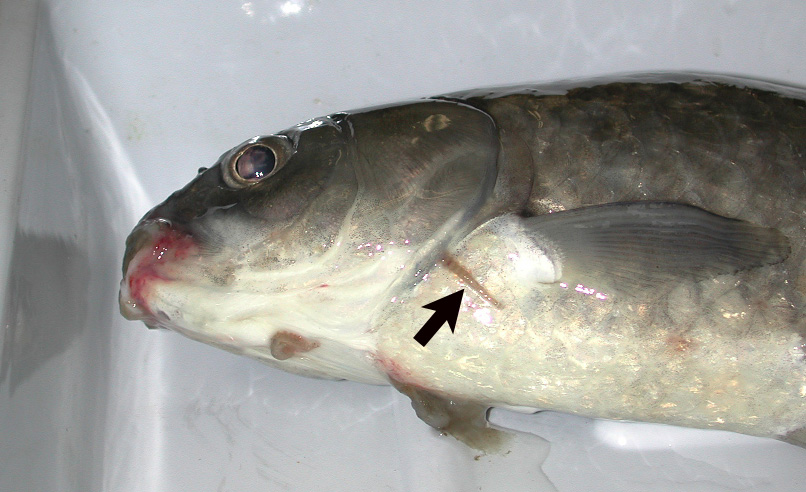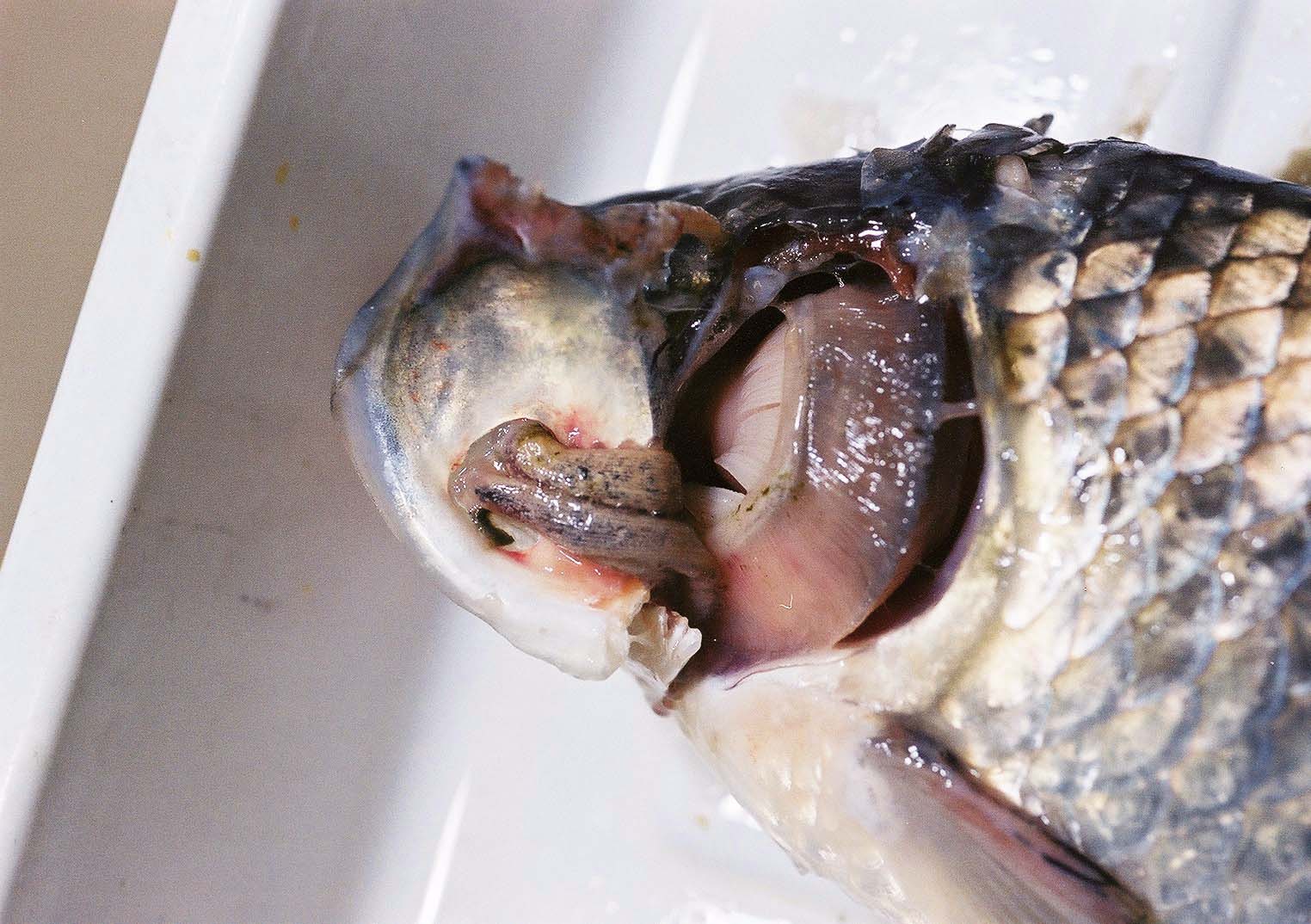
| Parasite | Limnotrachelobdella sinensis |
|---|---|
| Taxonomy | Annelida, Hirudinea |
| Hosts | Carassius auratus langsdorfii, Japanese crucian carp (Carassius cuvieri) |
| Infection site | Inner operculum |
| Clinical signs | A leech is visually observed in the inner operculum (Figs. 1 and 2), and less frequently to the mouth lips and eyes. The gills become anaemic. Moribund fish is led to the death. |
| Parasitology | L. sinensis is a blood-feeding leech (length 3.8-4.9 cm; width 0.9-1.5 cm) (Fig. 3). The body is distinctly divided into a relatively short, narrower neck and a long, broad trunk. The anterior sucker is smaller compared to the posterior sucker. Bubble-like protrusions on body sides occur in 11 pairs, spherical and large. Mating may take place on the host, and the leech may leave host to lay eggs in small chitinoid cocoons that are attached to water plants and other underwater objects. It has a one-year life cycle, in which the leeches were found from December until April next year in the Yodo River (Ogawa et al., 2007). |
| Pathology | The gills are anaemic due to the blood-feeding. The inner surface of the operculum shows extensive haemorrhages and erosion. The leech probably provides a portal of entry through an attachment wound for a secondary pathogen Flavobacterium psychrophilum, the causative agent of bacterial coldwater disease (Ogawa et al., 2007). |
| Health hazard | Since this parasite is not infectious to human, it is harmless in food hygiene. |
| Diagnosis | Observe the morphology of the parasite. Bubble-like protrusions on body sides are characteristic feature for this parasite. |
| Other information | Infestations by this leech have been reported in Carassius auratus langsdorfii and C. cuvieri of the Yodo River since 2000 (Ogawa et al., 2007). Eighty percent of moribund crucian carps were infected in the parasitological surveys from 2000 to 2005 (highest number of parasites / fish: 62). This parasite was originally reported in common carp in China, but infected common carp are not found in the Yodo River. |
| References | Ogawa, K., O. Rusinek and M. Tanaka (2007): New record
of the leech Limnotrachelobdella sinensis
infecting freshwater fish from Japanese waters. Fish Pathol., 42, 85-89. |



(Photos by M. Tanaka (1, 2) and K. Ogawa (3))
Fig. 3. Ventral side of L. sinensis (formalin-fixed specimens).
Fig. 2. L. sinensis attaching on the inner surface of the gill opeculum.
Fig. 1. A part of Limnotrachelobdella (arrow) is observed.